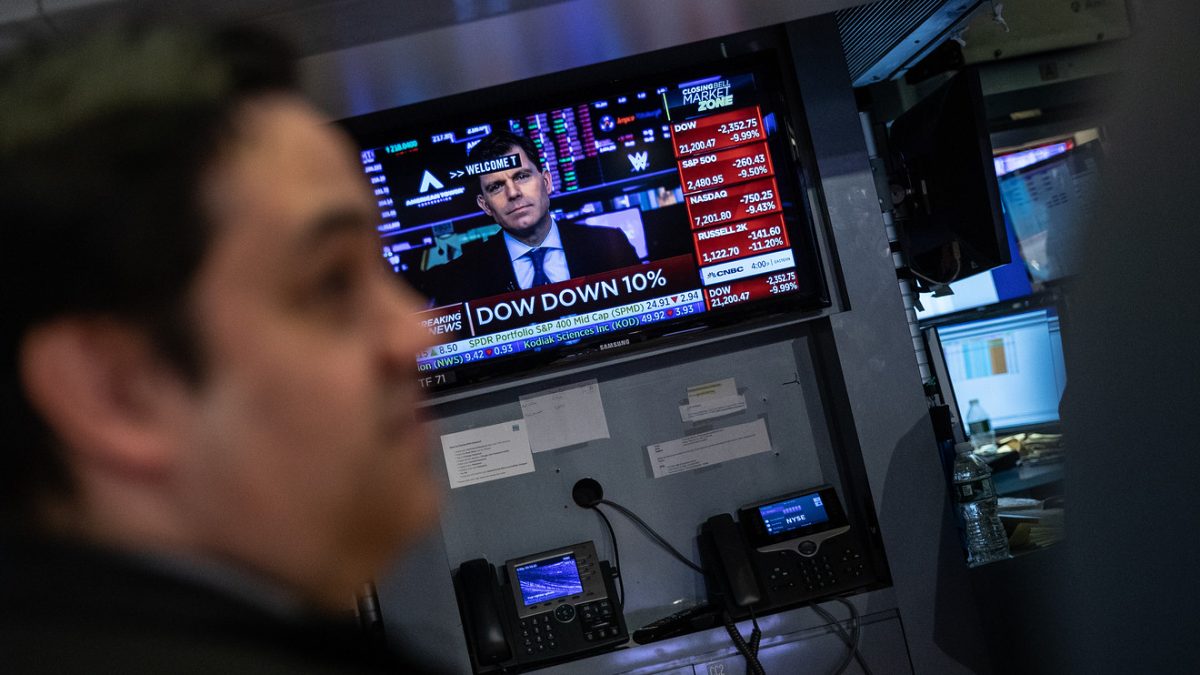If the Dow falls more than 18.15% this week it will mark its worst week on record

Published: March 13, 2020 at 12:12 a.m. ET, by Mark DeCambre
Get ready for the worst week ever for stocks — ever. The Dow Jones Industrial Average is on the verge of carving out history on Friday, but for all the wrong reasons if you are a bullish investor.
The threat of the spread of the novel coronavirus has injected a dose of never-before-seen volatility on Wall Street and a brutal stretch for stocks that seems likely to produce the worst weekly decline for the Dow since the blue-chip gauge was created in 1896 by Charles Dow.
It won’t take much to achieve that dubious distinction. The Dow is off 18.03% so far this week and would book the worst weekly decline for the index — which turns 124 years old on May 26 — if it surpasses the 18.15% drop in the week ended Oct. 10, 2008, at the height of the financial crisis that ushered in the 2007-’09 recession (see table attached).
| WEEK ENDING | WEEKLY % CHANGE FOR THE DOW JONES INDUSTRIAL AVERAGE |
| Oct. 10, 2008 | -18.15% |
| March 12, 2020 | -18.03%* |
| July 7, 1933 | -16.66% |
| May 18,1940 | -15.48% |
| Oct. 8, 1932 | -15.15% |
| Source: Dow Jones Market Data *active | |
This time the culprit behind potentially the record-setting decline for the Dow is a viral outbreak that was first identified in Wuhan, China, in late December and has already infected 128,000 people and claimed 4,720 lives, according to data compiled by Johns Hopkins University.
To be sure, there are number of other factors that helped to contribute to the Dow, the S&P 500 and the Nasdaq Composite indexes falling into a bear market — widely defined as a drop of at least 20% from a recent peak — at the fastest pace from a record high in their histories. It took 19 trading days for the Dow to tumble into a bear market, which it did on Wednesday, and 16 sessions for the Nasdaq and S&P 500.
Chief among those factors, however, has been uncertainty due the novel virus that traders, strategists and economists are finding hard to model for, market participants say.
Fear of the spread of the disease known as COVID-19 has forced curbs on everything from public gatherings, travel, professional sports outings to Broadway, and it feels as if the impact of the outbreak is just getting revved up.
Thursday’s equity drop was also marked by a mostly sell-everything mood on Wall Street, as investors appeared to want to eschew not just stocks but also bonds and gold, usually considered safe havens during times of stock-market stresses.
Gold for April delivery tumbled by $52, or 3.2%, to settle at $1,590.30 an ounce on Thursday, while the 10-year Treasury note saw its yields, which move opposite to prices, rise, when they should have been falling.
The odd trading action, reflected to some that buyers for assets of all stripes were few and far between.
The tumult came even after the Federal Reserve attempted to address disruptions in the U.S. bond market and in other parts of the market by injecting hundreds of billions of dollars into the financial system. The European Central Bank was seen disappointing market participants by not doing enough to limit the economic impact of the viral outbreak that has exploded in Italy, forcing the country into a state of total lockdown.
Ultimately, it isn’t apparent how it all shakes out.
But one thing is clear, it will go down in history as one of the ugliest periods for equities in history, if the recent downtrend isn’t halted soon.
There were few economists or strategists who would have predicted this outcome 19 trading days ago, but many are now predicting that the recession is an almost a certainty. So, now investors are looking at the end of the longest bull market in history, which had run to a record-setting 11 years until Wednesday, and a record-long economic expansion which will turn 12 in June.
“So far, the news has all been bad and getting worse, but if, for instance, an effective treatment is announced, the Dow could rally 3,000 points in a single session,” wrote Stephen Todd, popular financial blogger, who writes Todd Market Forecast’s.
Perhaps it’s fitting then that the Dow books its worst week on Friday, March 13, during a period where the market is rightfully spooked.
“Trading these markets is crazy as even I was getting scared of the volatility in my [profit and loss statements] yesterday. Maybe because it’s my own money now and not the banks!!” wrote Stephen Innes, chief market strategist at AxiCorp, in a research note late Friday.
Source: www.marketwatch.com